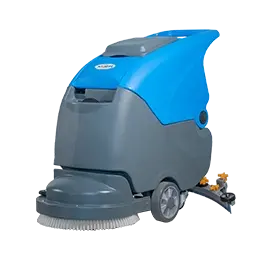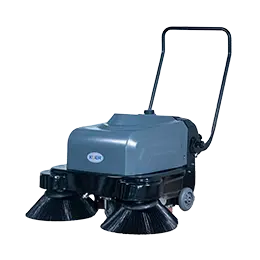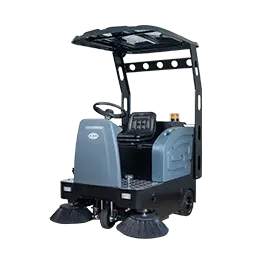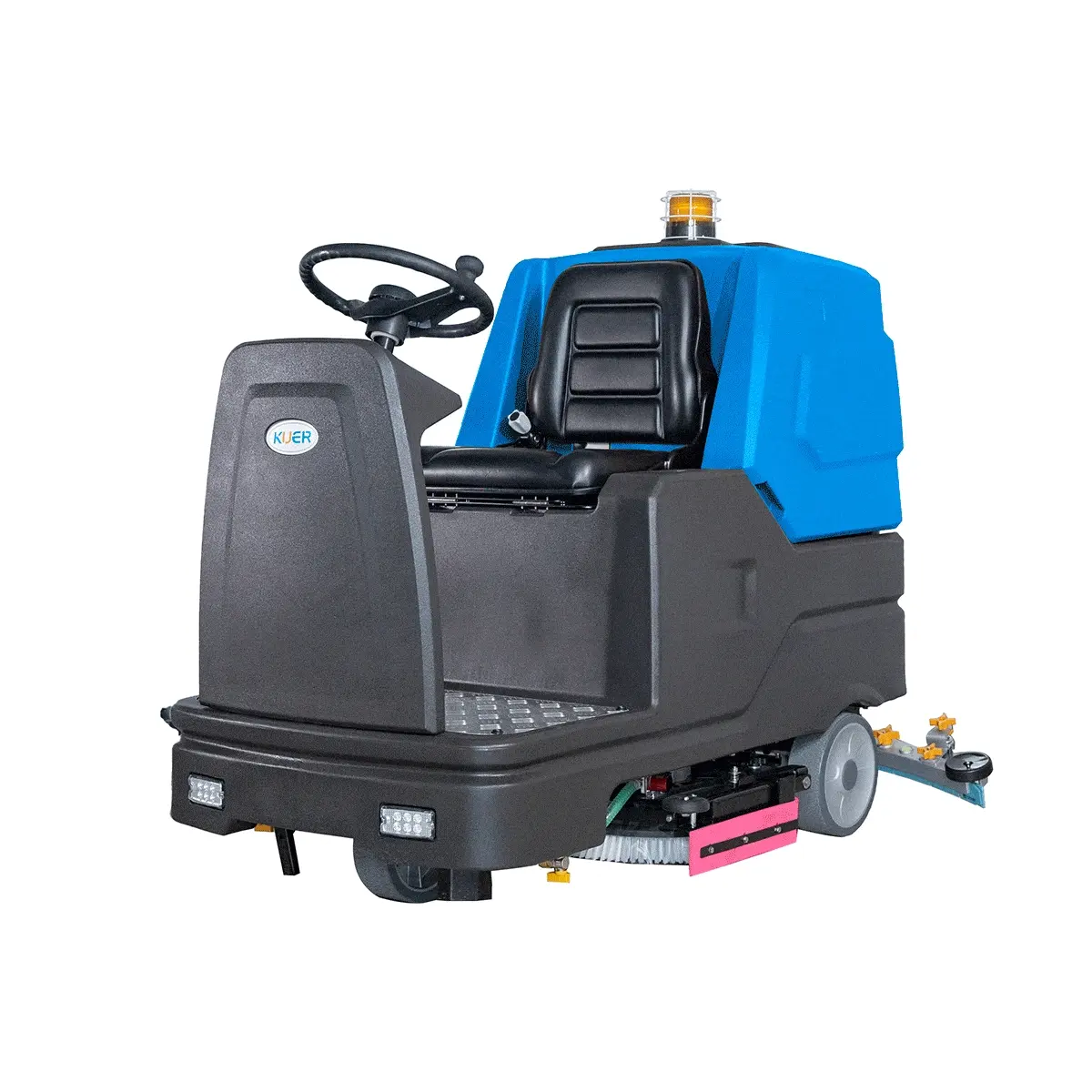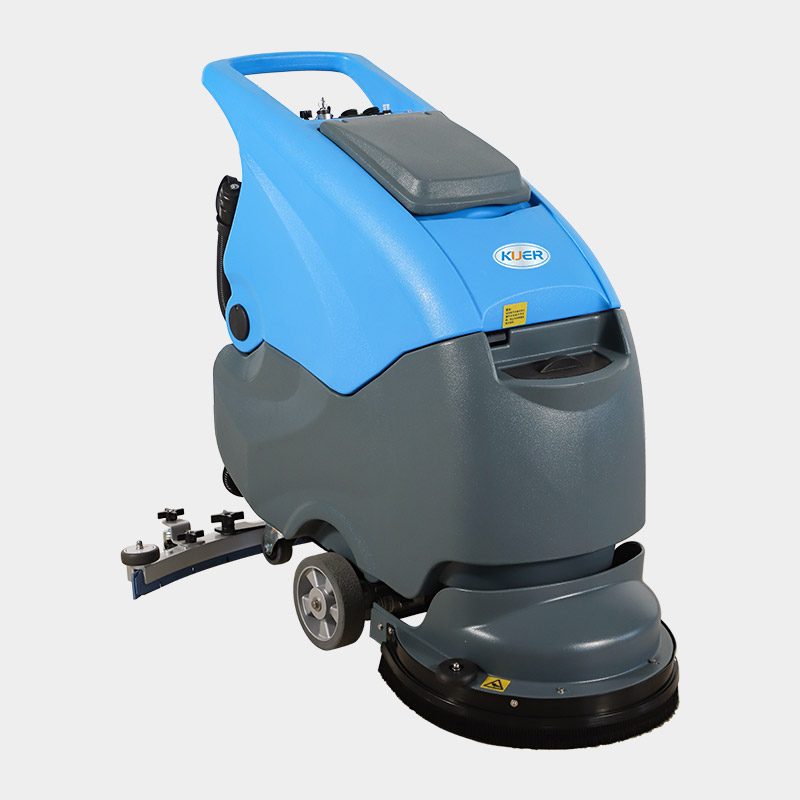
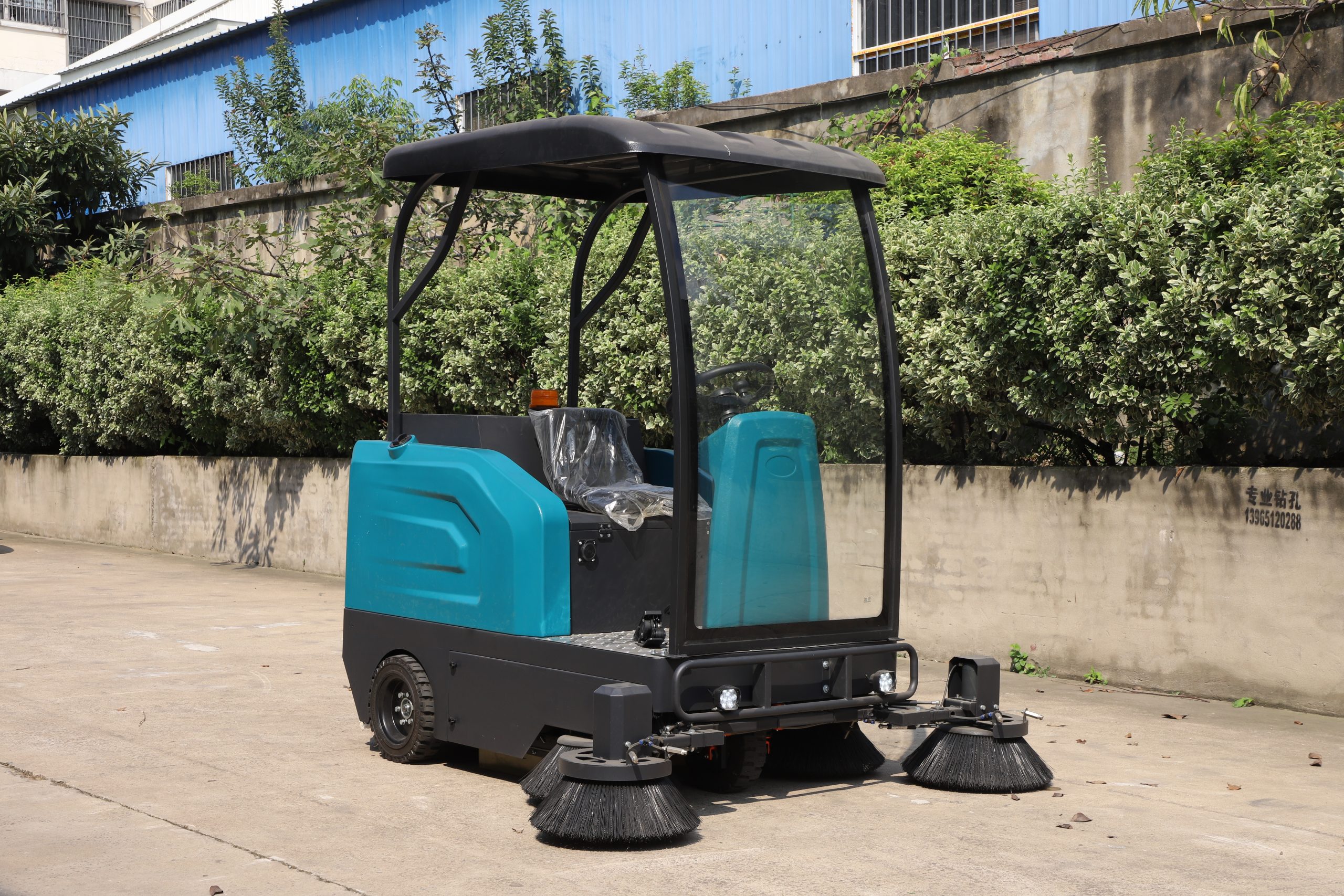
A floor scrubber and a floor sweeper are both types of cleaning machines used for maintaining floors, but they serve different purposes and function in distinct ways. Here's a breakdown of the key differences between them:
1. Purpose:
-
Floor Scrubber: A floor scrubber is designed to clean and sanitize floors by scrubbing away dirt, grime, and stains. It typically uses water, cleaning solutions, and brushes or pads to scrub the floor surface, leaving it clean and often polished. Floor scrubbers are ideal for deep cleaning hard floors.
-
Floor Sweeper: A floor sweeper, on the other hand, is used primarily to sweep up loose debris like dust, dirt, and small debris. It doesn’t usually wash or scrub the floor but instead uses rotating brushes or brooms to gather dirt, which is then collected into a dustbin or hopper. Sweepers are typically used for routine or light cleaning.
2. Cleaning Method:
-
Floor Scrubber: Scrubbers have rotating brushes or pads that apply pressure and scrub the floor’s surface, while simultaneously dispensing water and cleaning solution. Some scrubbers have a vacuum system that helps to pick up the dirty water after scrubbing, leaving the floor drier.
-
Floor Sweeper: Sweepers use a set of brushes that rotate and push dirt and debris into a collection hopper or bin. The sweeper might have a vacuum feature, but it’s not for scrubbing or washing the surface.
3. Surface Preparation:
-
Floor Scrubber: These are better suited for floors that need deep cleaning, such as removing oil, grease, or stains. They can be used on a variety of floor types, including tiles, concrete, and even some carpeted areas (if fitted with appropriate pads).
-
Floor Sweeper: Sweepers are typically used to maintain cleanliness on floors that aren’t heavily soiled or stained. They work well for collecting dry debris from places like warehouses, parking lots, or offices where there’s minimal dirt buildup on the surface.
4. Application and Use:
-
Floor Scrubber: Often used in places where hygiene and deep cleanliness are a priority, such as hospitals, factories, schools, and shopping malls. It’s great for high-traffic areas where dirt and grime accumulate more quickly.
-
Floor Sweeper: Often used in larger areas like warehouses, airports, or outdoor spaces where debris can accumulate but doesn’t necessarily require deep cleaning. Sweepers are more focused on removing visible dirt rather than sanitizing the surface.
5. Water Usage:
-
Floor Scrubber: Uses water and cleaning solutions during the cleaning process, often with a vacuum system to recover dirty water. This means it’s a more intensive, water-based cleaning machine.
-
Floor Sweeper: Usually doesn't require water. It's designed for dry sweeping, although some models may have a dust-control feature that adds moisture to help capture fine particles.
6. Floor Finish:
-
Floor Scrubber: In addition to cleaning, floor scrubbers can often leave a floor with a shiny, polished appearance, depending on the type of pad or brush used.
-
Floor Sweeper: Sweepers only collect debris without changing the appearance or finish of the floor. They don’t have a polishing or scrubbing function.
In Summary:
- Floor Scrubber: Cleans and sanitizes floors by scrubbing with water and cleaning solutions, leaving floors cleaner and often shinier.
- Floor Sweeper: Collects dry debris using rotating brushes and doesn’t typically involve water or deep cleaning.
Both machines are valuable in their own right and often used in combination, depending on the cleaning needs of the area.


